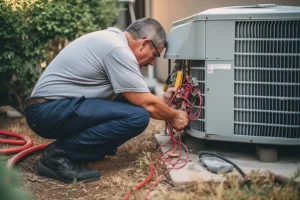Integrating sustainable practices in school environments is crucial for a comprehensive learning experience. These initiatives not only benefit the planet but also instill responsibility and innovation in students. The impact extends beyond classrooms, shaping a more sustainable world for future generations.
Key Takeaways
- Sustainable practices enhance air quality in educational spaces.
- Green initiatives improve student health and well-being.
- Cost savings from sustainable practices benefit schools.
- Hands-on sustainability learning opportunities empower students.
- Sustainable practices instill environmental stewardship in the school community.
The Importance of Sustainable Practices
Emphasizing the significance of integrating sustainable practices for businesses, ‘Improving Educational Spaces: How Sustainable Practices Enhance School Environments’ underscores the pivotal role these initiatives play in fostering environmentally-conscious and socially responsible school environments. By incorporating sustainable practices, schools not only reduce their carbon footprint but also educate students on the importance of environmental stewardship, creating a community that values sustainability and contributes positively to the world.
Benefits of Sustainable School Environments
Enhancing school environments with sustainable practices leads to a myriad of benefits that positively impact students, faculty, and the community as a whole. These benefits include improved air quality, enhanced student health and well-being, reduced operating costs for schools, hands-on learning opportunities for students, and a sense of environmental stewardship instilled in the school community. Sustainable school environments foster a culture of innovation and responsibility while creating a more inclusive and dynamic educational space.
Implementing Sustainable Strategies in Schools
Utilizing a strategic approach, schools can effectively integrate sustainable practices into their operations, fostering a culture of environmental consciousness and responsibility among students and staff. This can be achieved through initiatives such as energy-efficient lighting, waste reduction programs, and implementing green spaces. By incorporating these sustainable strategies, schools not only reduce their environmental impact but also provide a hands-on learning experience for students on the importance of sustainability.
Overcoming Challenges in Sustainability
Addressing the complexities inherent in sustainable practices within school environments requires a multifaceted approach that acknowledges and navigates through various obstacles. Challenges such as limited budgets, resistance to change, and lack of awareness may hinder sustainability efforts. Overcoming these hurdles involves fostering a culture of innovation, providing education on the benefits of sustainability, and collaborating with stakeholders to create impactful solutions for a greener future in schools.
Engaging Stakeholders for Sustainable Change
How can schools effectively involve stakeholders in driving sustainable change within their educational environments? By fostering open communication channels, providing opportunities for input, and creating a shared vision for sustainability, schools can engage stakeholders in meaningful ways. Encouraging collaboration, celebrating successes, and addressing concerns promptly are key strategies to guarantee active participation and commitment to sustainable practices among all stakeholders.

Frequently Asked Questions
How Do Sustainable Practices in Schools Impact Student Performance?
Sustainable practices in schools greatly influence student performance by fostering a healthy, eco-conscious environment that enhances focus, productivity, and overall well-being. By promoting sustainability, schools create a positive atmosphere conducive to academic success and personal growth.
Can Sustainable Initiatives in Schools Save Money in the Long Run?
Sustainable initiatives in schools can save substantial costs in the long run by reducing energy consumption, water usage, and waste. Implementing efficient systems and practices not only benefits the environment but also the school’s financial sustainability.
What Are Some Innovative Sustainable Strategies for School Buildings?
Innovative sustainable strategies for school buildings encompass green roofs, passive solar design, rainwater harvesting, and energy-efficient HVAC systems. These strategies not only reduce environmental impact but also create healthier and more conducive learning environments for students.
How Can Schools Ensure the Longevity of Sustainable Practices?
Schools can guarantee the longevity of sustainable practices by instituting thorough maintenance programs, investing in renewable energy sources, educating students on sustainability, and fostering a culture of environmental stewardship. These steps promote a sustainable future.
What Role Do Students Play in Promoting Sustainability in Schools?
Students play a pivotal role in promoting sustainability in schools by actively engaging in eco-friendly initiatives, advocating for green practices, participating in recycling programs, and fostering a culture of environmental awareness through education and action.
Conclusion
To sum up, implementing sustainable practices in educational spaces is essential for enhancing school environments and promoting environmentally-conscious behaviors. By integrating energy-efficient lighting, waste reduction programs, and green spaces, schools can diminish their carbon footprint and instill a sense of environmental stewardship in the school community. Through these initiatives, schools can not only enhance air quality and cut operating costs but also offer valuable hands-on learning opportunities for students on sustainability.
You May Also Like To Read:

